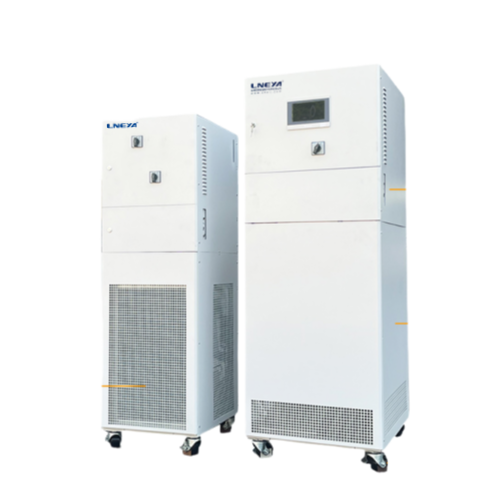What Is a Temperature Control System
What is a temperature control system?
A temperature control system is a device or system used to regulate temperature. It monitors the real-time temperature of an object and compares it with the set value, reducing the error by heating or cooling to maintain the temperature within the set range. It is widely used in industrial manufacturing, scientific experiments, HVAC and other fields.
Key factors of a temperature control system
Temperature sensor
The temperature sensor can monitor the temperature of the environment or medium in real time. Common sensors include Pt100, thermocouple, NTC thermistor, etc. Temperature sensors with fast response speed, high accuracy, strong stability and good anti-interference ability are more expensive.
Controllore
The controller is used to receive sensor data, compare it with the set temperature, and output a control signal. Common controllers include PLC, PID, embedded systems, etc. A controller with excellent performance can balance the response speed and control accuracy to avoid temperature fluctuations.
Cooling system and heating system
The cooling system and heating system can start and adjust the output power according to the instructions of the controller. Provide heat source for equipment or processes that require temperature control through direct contact or indirect contact (through DI water/glycol-water mixture/oil).
Manual temperature control
Manual temperature control involves manually adjusting the switch and power of heating and cooling equipment. It has a low degree of automation and cannot achieve unmanned supervision during operation. The response speed and control accuracy are low. It is suitable for scenarios where the temperature control accuracy is low and the process does not require continuous temperature control. Most manual temperature control systems use mechanical knobs to select temperature settings or levels.
Automatic temperature control
The automatic temperature control system uses Pt100 sensors, PID algorithms and PLC controllers. After setting the target temperature on the panel, the system can automatically collect temperature data and activate cooling or heating modules to quickly respond to environmental changes, adjust the output, and avoid adjustment lag and temperature fluctuations.
With long-term continuous operation design and remote control, automatic alarm, safety devices and other functions, true unattended operation can be achieved. Common automatic temperature controls include industrial chiller systems and HVAC systems. The initial cost and maintenance cost of automatic control systems are high, and they are generally used in large scenarios such as industrial production, hospitals, and shopping malls.
Common temperature control systems
Human body temperature control system
The human body is a type of temperature control system. The hypothalamus is the temperature regulation center of the human body. It is like an automatic thermostat, coordinating the nervous system, hormones, blood vessels and sweat glands, and stabilizing the core body temperature (brain, heart, etc.) at about 37°C through various physiological reactions. This system is also called the thermoregulatory system.
When you feel hot, the human body takes away heat through sweating and vasodilation. When you feel cold, your muscles tremble, your blood vessels contract, and your hair stands up, which helps your body reduce heat loss and quickly generate heat. When the body temperature returns to normal, the regulation stops automatically.
Air conditioning temperature control system
The most common temperature control system around you is the air conditioner. Just press the control button to set the target temperature, and you can enjoy an almost constant temperature indoor environment. The temperature sensor in the air conditioner can collect indoor temperature data in real time, calculate the deviation between the current temperature and the set temperature, control the operation of components such as the compressor and fan, and adjust the cooling or heating output to reach and maintain the set temperature.
Industrial process chiller
Industrial chiller is a typical automatic temperature control system. To ensure control accuracy, it uses multiple sets of Pt100 sensors to monitor the temperature of the cooling medium before it flows back to the chiller from the process equipment, the temperature when it flows out of the chiller and does not enter the process equipment, and the temperature of the cooled material in the equipment. According to the monitoring data, the expansion valve opening, refrigerant flow, etc. can be automatically adjusted. Commonly used for industrial process cooling, such as laser cutting machines, reactors, wafer manufacturing, and low-temperature testing, etc.

Conclusion
LNEYA is a chiller manufacturer located in China. We provide industrial automatic temperature control systems with different performances. Whether it is cooling laser cutting machines, CNC, injection molding machines or conducting battery tests, thermal shock tests, thermal cycle tests, high and low temperature tests, we have dedicated production lines. You can contact our temperature control experts at any time for any needs.
Related chillers
FAQ
CONTATTO
TEL:
EMAIL:
WeChat & WhatsApp:

Wechat QR

Hai domande o hai bisogno di un preventivo? Compila il modulo sottostante e il nostro team ti risponderà entro 24 ore.
 Refrigeratori industriali LNEYA Produttore Fornitore
Refrigeratori industriali LNEYA Produttore Fornitore














